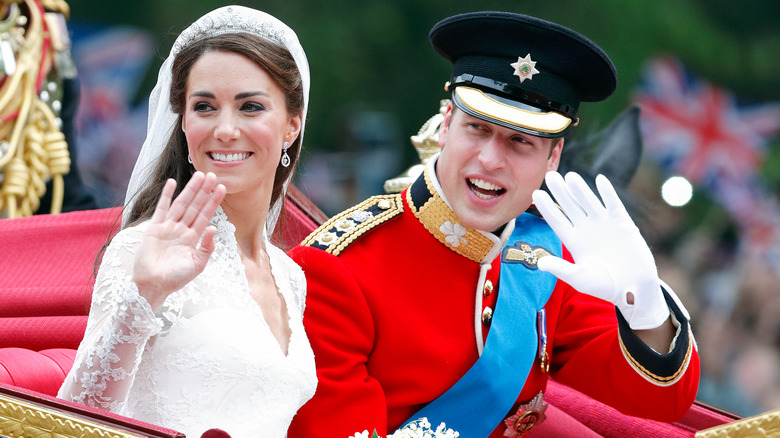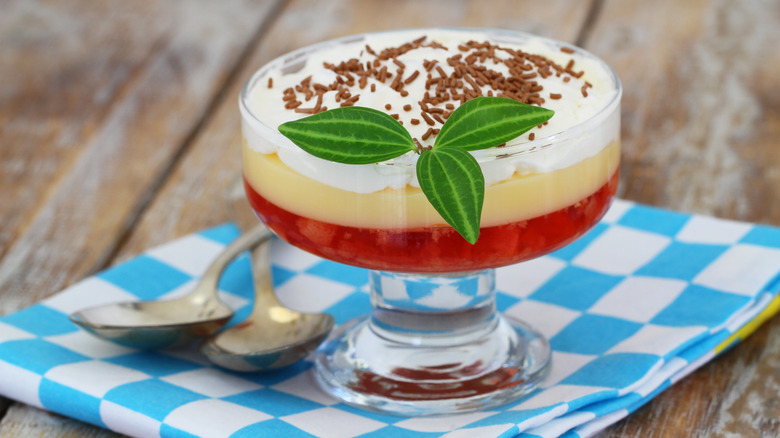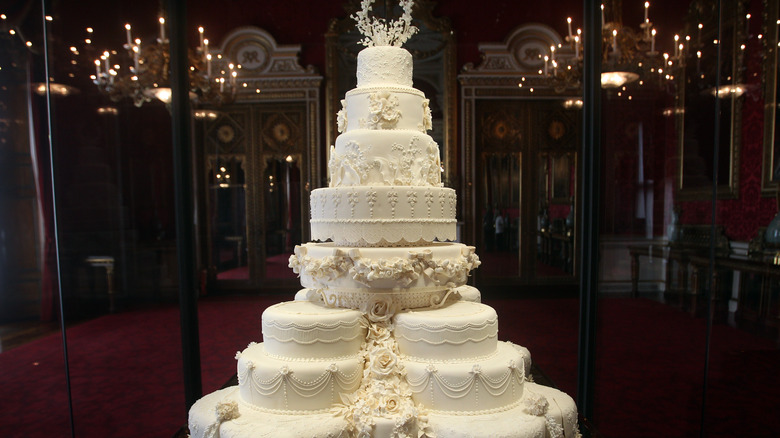The Lavish Desserts William And Kate Served At Their Royal Wedding
When we were little, many dreamed about ruling a kingdom or slicing through combatants while wearing ornate armor and riding a galloping horse. The existence of real royals gives these fantasies a certain weight, and the lives of these modern monarchs, while lacking both dungeons and dragons, are just as refined as you might have imagined.
Just a cursory glance at the famous coronation dishes throughout history reveals that the royal family, unsurprisingly, has a taste for finer foods. When William, Prince of Wales and Catherine, Princess of Wales, tied the knot over a decade ago, partygoers had no shortage of delicious dishes to choose from. While the wedding stuck with tradition and had two towering cakes round out the sweet spread, guests were presented with a selection of desserts before the cake was cut. As opposed to the peasants of the past, the attendants of William and Kate's wedding loved that the royals allowed them to eat cake.
William and Kate's fancy feast
The 2011 royal wedding, which nearly 2,000 guests attended, was whittled down to a tight 300 for the post-wedding dinner reception. The meal had three courses: Dressed seafood with a mini crab mousse. Then, it segued into the second course, a lavish lamb plate with spring vegetables, before finally finishing with a trio of treats.
Though any dessert options presented at William, Prince of Wales and Catherine, Princess of Wales wedding would have been an acceptable solitary selection, the attendants received all succulent sweets. There was a chocolate parfait, honey ice cream in an edible brandy snap basket, and a sherry trifle, a traditional English dessert that brings together berries, cream, custard, cake, and, of course, sherry. Royal chef Darren McGrady contends trifle is one of the palace kitchen's specialties. These wildly different dishes ensured every guest could eat a treat they truly enjoyed.
Two cakes to wrap up the meal
Furthermore, if the royal wedding guests had any stomach space left over after these three colossal courses, two very different tiered cakes towered over the festivities. One was a traditional variety of royal nuptials: fruitcake. The sweet spectacle was eight tiers tall, wholly coated in bright white icing, and adorned with more than 900 flowers sculpted from sugar. The royal family has featured fruitcakes at its weddings for hundreds of years. The alcohol in the cake makes it last longer, so it was an invaluable ingredient for bakers operating before refrigeration technology. For years, you could buy a slice of Kate Middleton and Prince William's royal wedding cake, though pieces sold in the 2020s seem to be going for exorbitant sums, often in excess of $1,000. Today, this tradition of preservation allows culinary artisans time to give the dessert its ornate finish.
The second cake, a groom's cake styled after a treat William loved as a boy, was a much simpler affair. This one had only three tiers, and it wasn't even baked. It was a chocolate cookie cake (or, because this celebration occurred in the United Kingdom, a biscuit cake). To make this royal chocolate biscuit cake, the bakers crushed Rich Tea biscuits, a popular teatime treat, and mixed the mashed cookies with butter, sugar, and chocolate. After the unbaked butter mixture set in the refrigerator, the cake was coated in chocolate ganache and garnished with white chocolate flowers.


